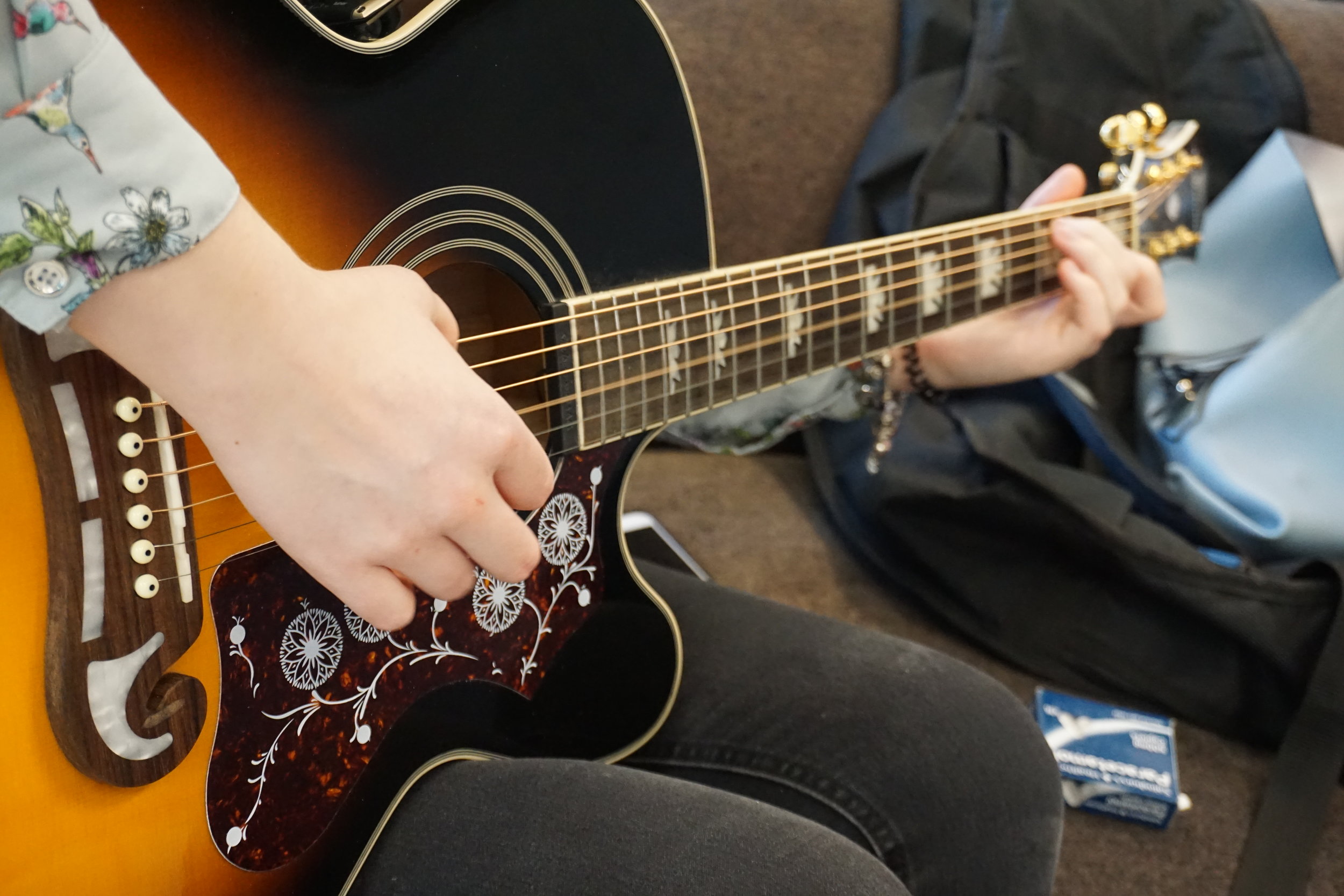Chord Theory and its Immediate Usefulness
Unless you know why it’s useful, the subject of chord theory could seem a bit bland.
Imagine being able to figure out many, many possible voicings (ways to play a chord) for virtually any chord without having to consult one of those “1001 Chord” Books for Guitar.
Let’s face it: you can’t really learn from those books anyway. You can look up the chord in question, choose a voicing, and memorize it, but two things happen:
a) you will always wonder if you chose the best voicing, or
b) (much worse) you will always be dependent on the book.
When you learn how chords are constructed, you can make judgements in real-time on fingering adjustments to make to get the chord you are looking for.
Understand that on guitar, the intervals of a chord may not be in the same order as they appear from low to high on an interval sheet. For example, a D chord consists of the notes d, f#, and a which is the 1, 3, and 5 of D major. But in practice a regular open D chord is “spelled” d, a, d, f# which is the 1, 5, 1, 3.
The chord still has the intervals of a “root position” D triad (i.e. 1, 3, 5), but the order of notes is jumbled up so we can play it a lot more easily.
Now suppose you need a Dm(maj7) which is a minor chord with a major 7th. Later in this presentation you will learn that a minor third is a half-step (one fret) lower than a major third, and a major 7th is a half-step below a root.
So first you take a D chord and lower the third of the chord (the f# on the first string) one fret to get Dm:
Then you lower the root of the Dm which (is on the 2nd string) one fret to get the major 7:
If this is confusing at all, just trust the process that is about to unfold for you.
Using the standard notation, tablature and diagrams on the following pages, you will be able to play the notes of each chord separately on one string, and then play a common fingering for that chord.
The advantage of playing chord tones on one string is that you can see the spatial relationship of the notes to each other so you can move notes around according to your needs (as in moving the major 3rd of D down one fret in the Dm(maj7) example.)
So first play each note separately, then play the chord.
The numbers right below the notes indicate the interval of that note within the scale. (For example, in bar 1, c is the 1st note of the C major scale, e is the 3rd, g is the 5th.)
I have also included the octave of the root, denoted as “8.” Playing the root an octave up helps you see the relationship of the last note of the chord (most often the 7th or b7th) to the next root (as in moving root of the Dm chord down one fret to get the major 7th in the Dm(maj7) example.)
It is also possible that, for fingering convenience, a note or two may be left out.
For example, some of you may notice that on the C6 chord, there is no 5th (the note g) in the voicing. This is not cheating. It’s more important to play the ‘good’ notes well and in a timely manner than to go for something less convenient for an interval that doesn’t add much to the overall flavour of the chord.
(In this case, the 6th really defines the C6 chord so we choose that note over the note g which is the 5th.)
As a final word, it would a great exercise for you to take different roots (ex: A, D, G, etc.) and make the intervals on 1 string for all the chords in that key. Then, try to come up with fingerings on your own before consulting your teacher for common ways to play them. Doing this will really solidify both your chord theory and your fretboard mastery.
About the Author: Dennis Winge is a pro guitarist and educator living in the Finger Lakes Region of New York State. For guitar lessons in Ithaca, NY be sure to check out his school.













